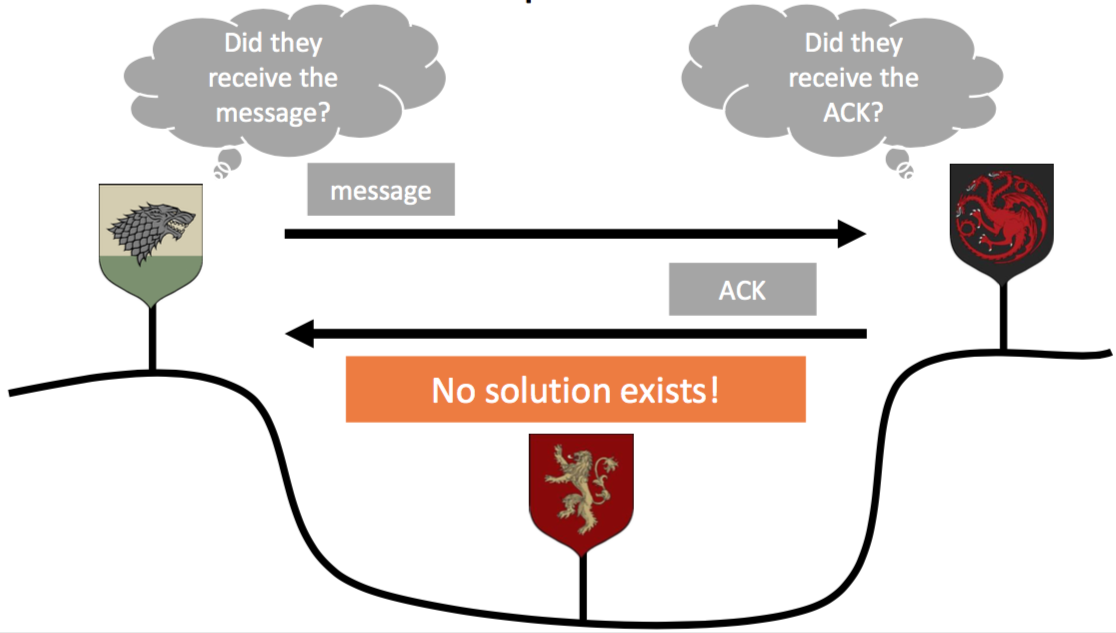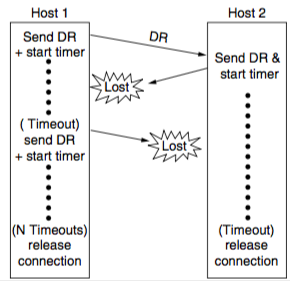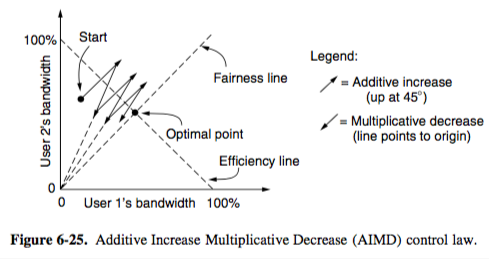Computer Networks
Table of Contents
Transport: elements of transport protocols
Elements of transport protocols Addressing
-
NSAP (network service access point) — IP address
-
TSAP (transport service access point) — port
-
some services are always on the same ports (e.g. mail server on TCP 25, ssh on TCP 22)
-
portmapper process
-
finds TSAP port for a specified service name, using its database
-
a new service registers itself with the portmapper
-
kind of like directory assistance phone operator
-
-
initial connection protocol
-
each machine that offers services has a process server (inetd on UNIX)
-
this acts a proxy for less used servers
-
listens to set of ports at same time, waiting for a conn request
-
Connection establishment
-
using sequence numbers for packets
-
label packets with sequence numbers that will not be reused within T seconds
-
packet hop limit used to remove old packets
-
time-of-day clock used to choose sequence number
-
-
three-way handshake
-
one peer checks with other if connection request is current
-
e.g. host 1 chooses sequence number x and sends it in CONNECTION REQUEST to host 2, host 2 replies with ACK containing its own sequence number y, host 1 acknowledges host 2’s sequence number in first data segment it sends
-
Connection release
-
asymmetric release — one host gtfo, other host is left hanging. can lead to data loss.
-
symmetric release — participants agree to end connection
- two-army problem — one white army vs two blue armies. one white beats one blue, but two blue beat white if attack at same time. can they coordinate attack using messengers? No.

- one way to semi-solve this is by timers and only allowing a certain number of timeouts, but y’know…it’s not great

Flow control
-
slow down sender if receiver can’t handle the data rate
-
received packets are buffered at the receiver
-
buffer management is done separately
-
available buffer space is receiver window size
Crash recovery
-
recovery from layer N crash can only be done by layer N+1 (higher abstraction)
-
but only if layer N+1 has info that lets it reconstruct previous state
-
e.g. if there’s a problem on the transport layer, the transport layer’s lazy ass leaves it to the application layer to fix its problems
Congestion control
-
needed to slow down sender if network can’t handle the data rate
-
bandwidth allocation
-
max-min fairness
-
maximises minimum bandwidth, then uses excess where possible
-
bandwidth given to one flow can’t be increased without decreasing bandwidth to another flow
-
-
amount of bandwidth needed for a connection varies, so need to converge to ideal point
-
sharing bandwidth between users
-
dynamic adjustments with AIMD — convergence:
-

- problem is, TCP data loss means congestion, and wireless loses data commonly. so wireless must mask data loss